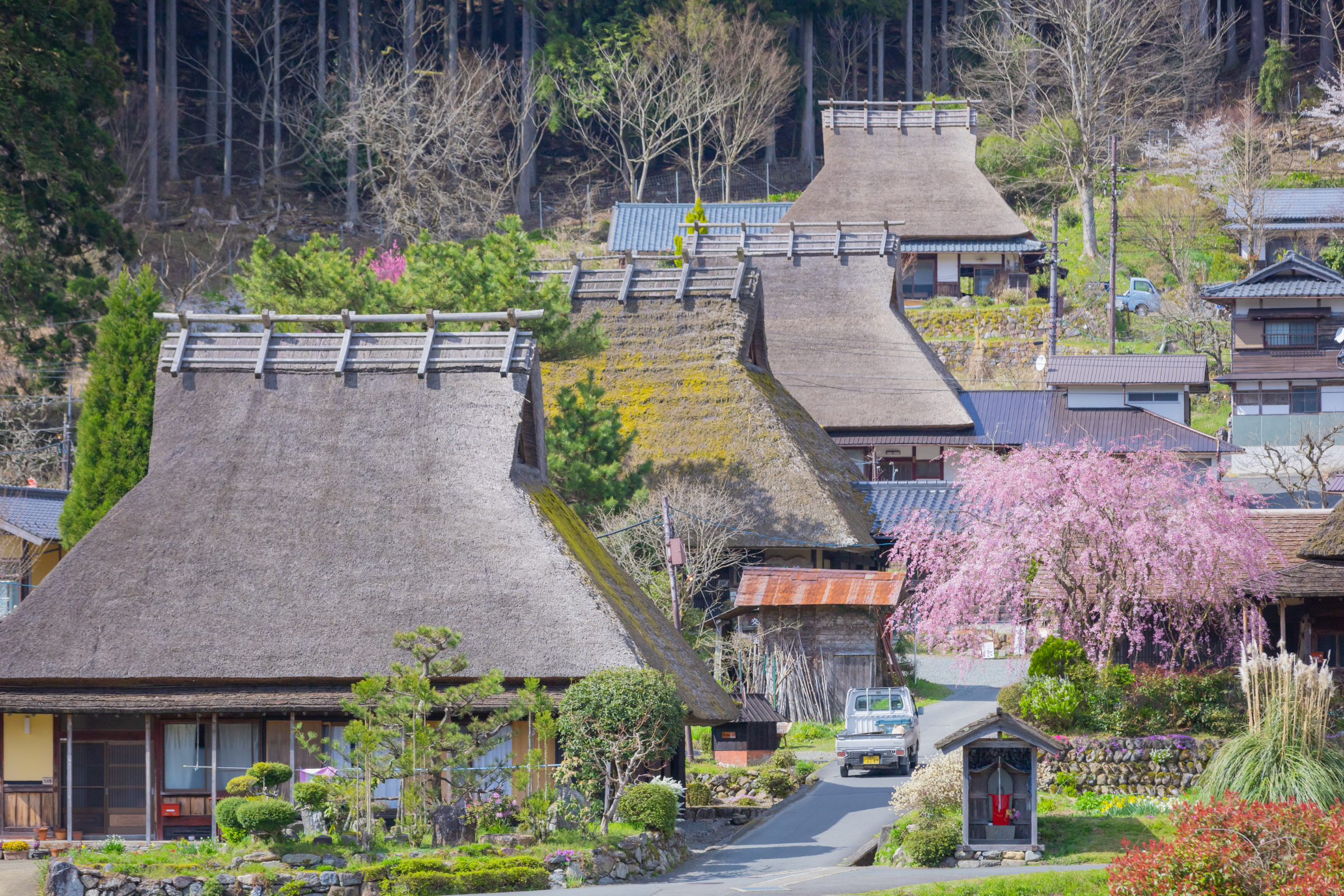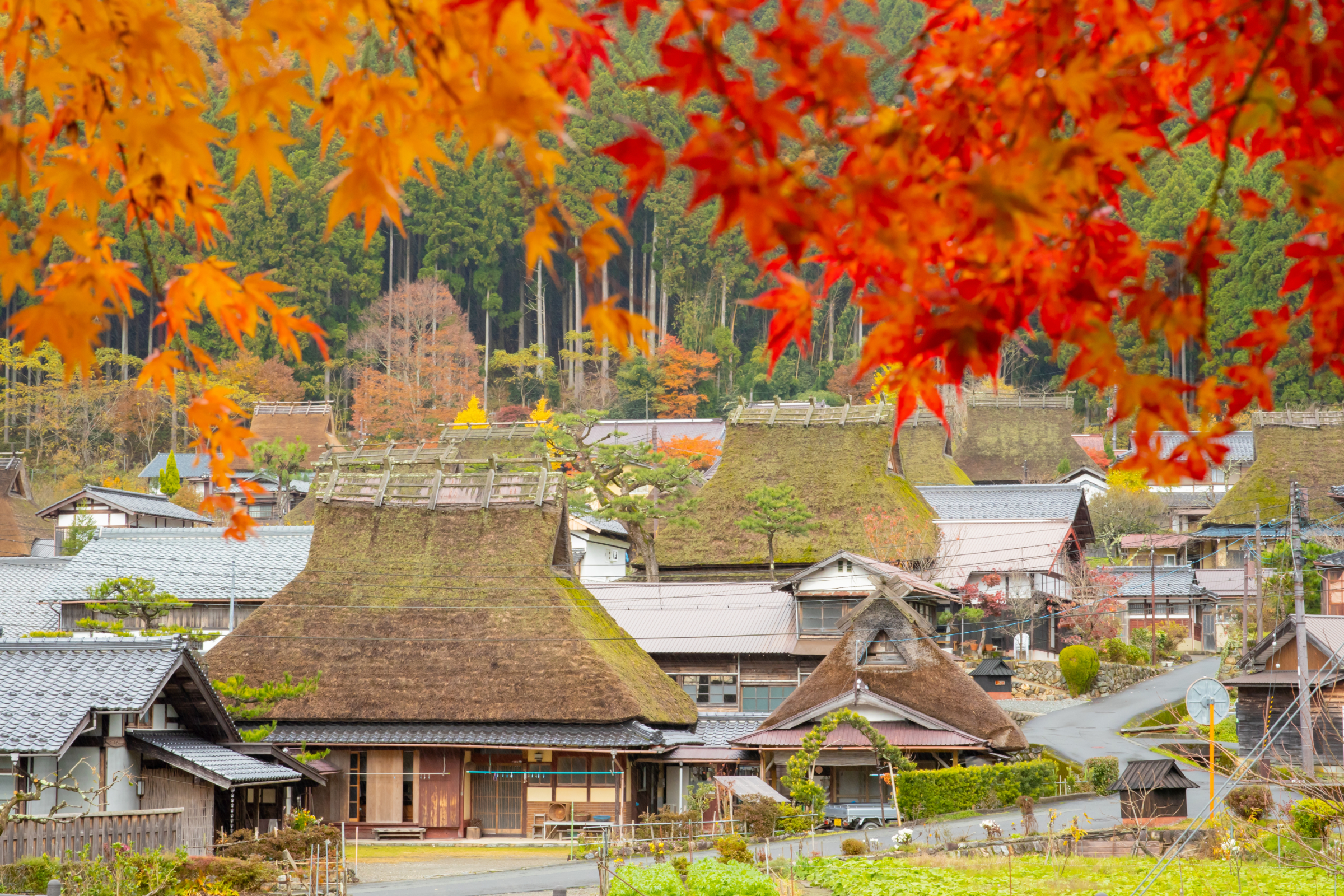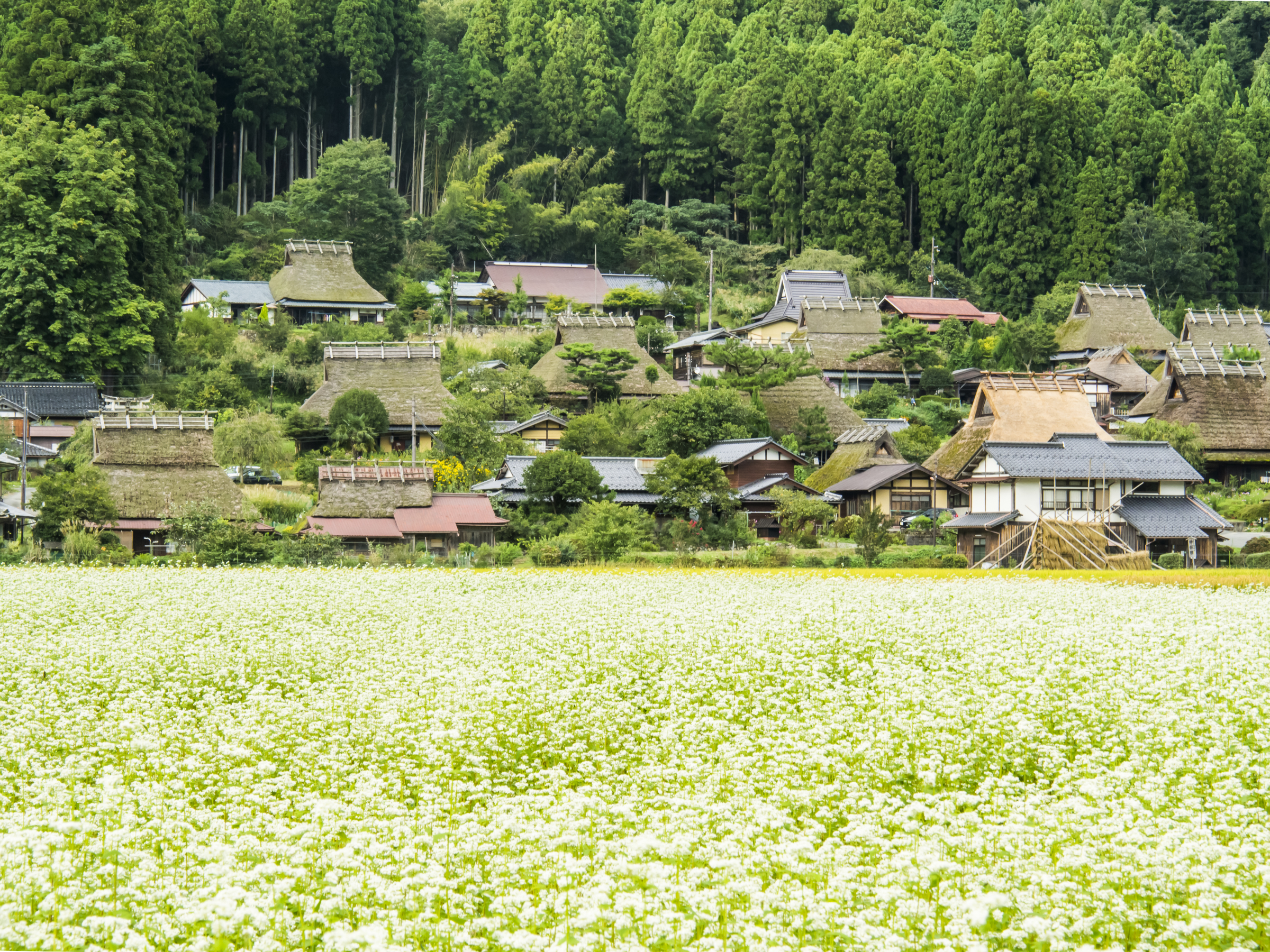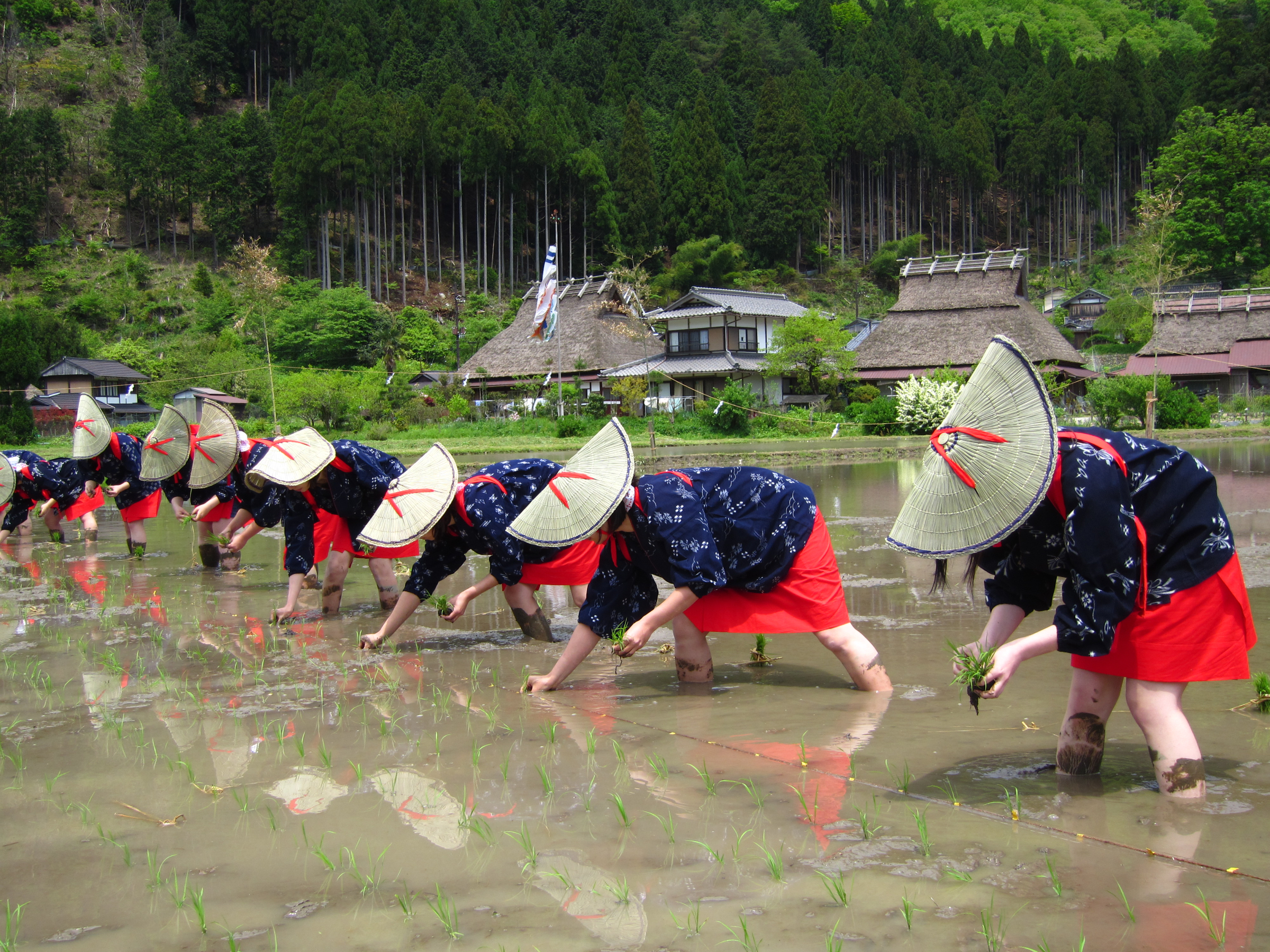
Kayabuki no Sato
かやぶきの里- Hiyoshi StationSan'in Main Line
- 64 minutes bus drive to Kita
- Walk 2 minutes
Nestled in Miyama Town, Nantan City, Kyoto Prefecture, Kayabuki no Sato - literally “thatched roof village” - offers a rare glimpse into historic rural Japan. The village is famous for its well-preserved Kitayama-style folk houses, with 39 of the original 50 thatched-roof homes still standing. Built between 220 and 150 years ago during the Edo and Meiji periods, these houses feature rice field-shaped floor plans, wooden walls and doors, and earthen-floored areas called ageniwa.
On December 8, 1993, the northern settlement of Kayabuki no Sato was designated by the national government as an Important Preservation District for Groups of Traditional Buildings, reflecting its cultural and architectural significance. The preservation area includes not only the thatched houses but also the surrounding rice fields, river, and mountains, maintaining the village’s traditional landscape in its entirety. Even the stone walls scattered throughout the village are carefully maintained by residents, who weed and repair them by hand.
The thatched roofs, made from susuki (pampas grass), are marvels of traditional engineering. Their steep angles and natural properties ensure they stay dry in rain, remain sturdy under snow, and withstand strong winds and typhoons without damage.
Adding to the village’s historic charm is the Saba Kaidō (“Mackerel Road”), an old trade route running east–west through the village, a reminder of Miyama’s role in regional commerce centuries ago.

Through every season, Kayabuki no Sato reflects the harmony of rural culture and natural beauty. From spring’s verdant growth and summer’s playful rivers to autumn’s fiery tapestry and winter’s quiet glow, the village remains a living heritage. Its scenic landscapes, community gatherings, and seasonal rituals are not just old customs -they are living traditions that continue to flourish in everyday life.

Local Cuisine
The village offers a variety of local flavours, with dishes prepared using fresh ingredients from the surrounding area and produce that reflects the changing seasons. Handmade soba made from locally grown buckwheat, sweets crafted from seasonal fruits, and traditional treats such as three-colour dumplings, ohagi, and kibimochi soft ice cream showcase the gentle sweetness of village traditions. Light bites like sandwiches and homemade puddings or cakes, as well as heartier options such as stone-baked pizza, provide opportunities to enjoy seasonal highlights in settings that reflect the warmth and charm of the thatched-roof community.

Otaue Festival
Each year in Kayabuki no Sato, the Otaue Festival brings to life the beauty and traditions of rural Japan. The day begins at Hachiman Shrine, where the saotome - rice-planting maidens chosen from local schools - dress in traditional attire and offer prayers for a rich harvest. Led by the chief priest and shrine maidens, they make a slow, ceremonial walk to the shinsen-den (sacred rice field). There, amid a Shinto ritual joined by local residents and businesses, the community unites in gratitude and hope for the year’s crops. Although the modern festival has been held for only about 15 years, it has quickly become a cherished tradition, reflecting a living culture rather than simply preserving the past.

Visiting Kayabuki no Sato is like stepping back in time, where architecture, nature, and community life are preserved in harmony, offering a rare window into Japan’s rural heritage.
While Kayabuki no Sato warmly welcomes visitors, it is first and foremost a home for its residents. Showing respect for the people and the beautiful environment - by keeping noise levels low and behaving considerately - helps preserve this unique village for everyone to enjoy.
Overnight stays are available; please refer to the homepage’s Stay section for details.
At Hey Japan!, we strive to keep the places listed on our website as current as possible. However, it is important to note that location owners or management may make changes to their plans, including canceling events, altering opening times, or modifying admission requirements, without prior notice. To ensure that you have the most accurate information, we recommend checking official websites before visiting any location.
Last Updated:











